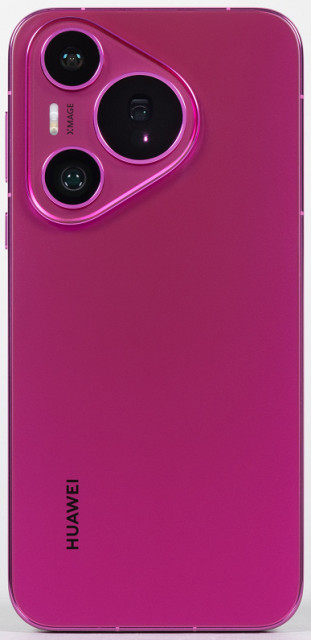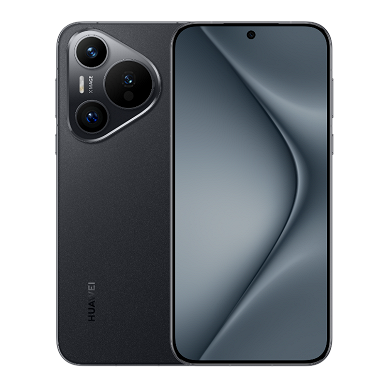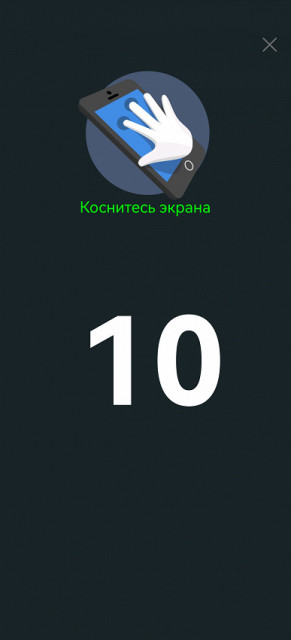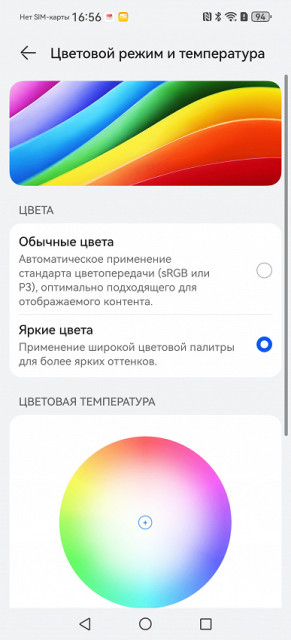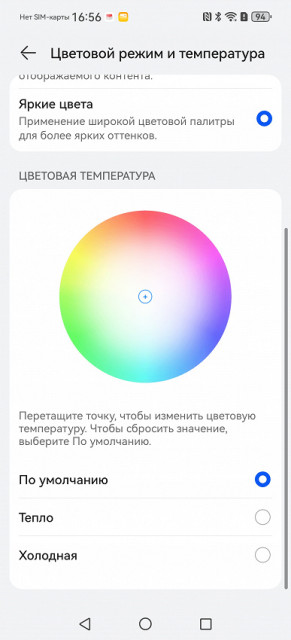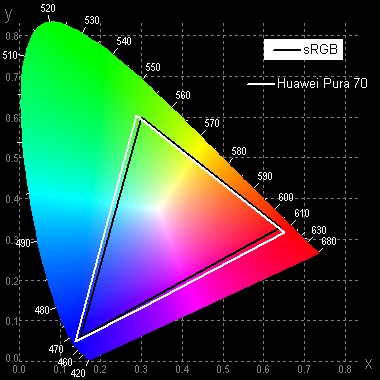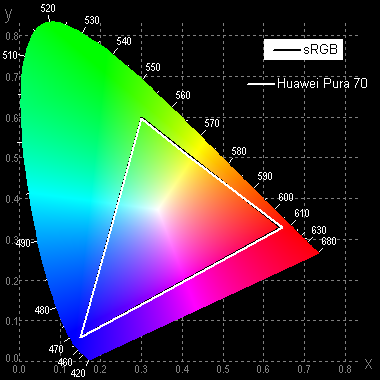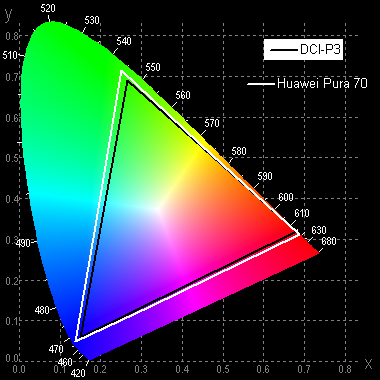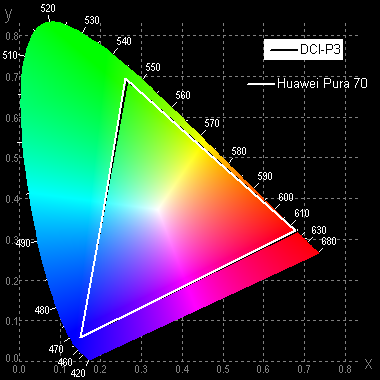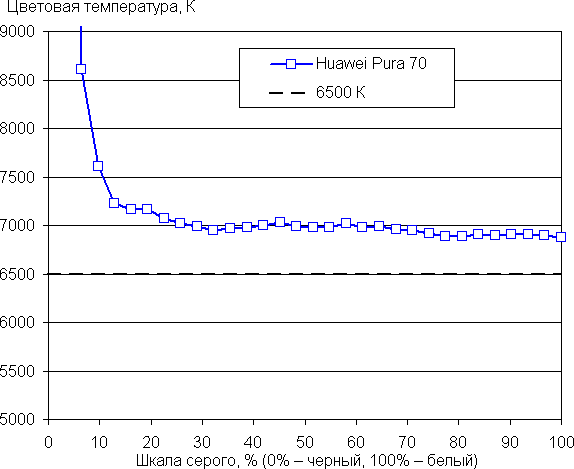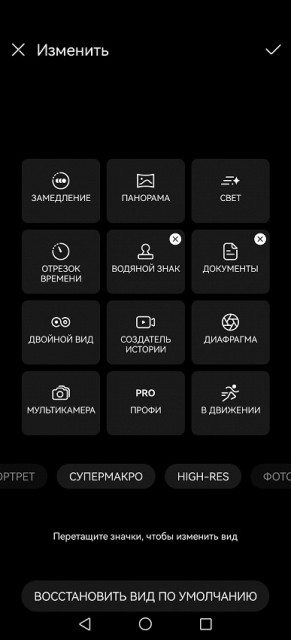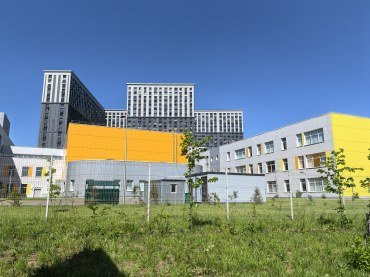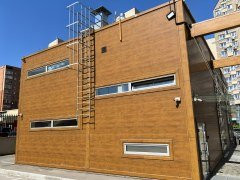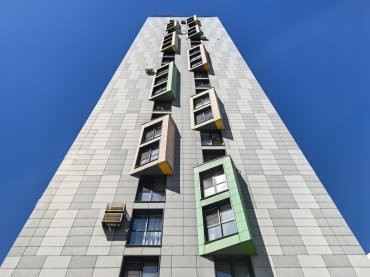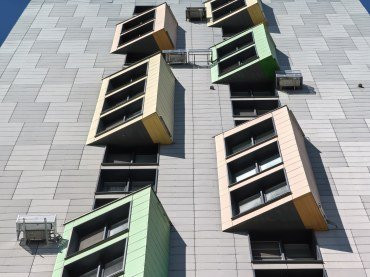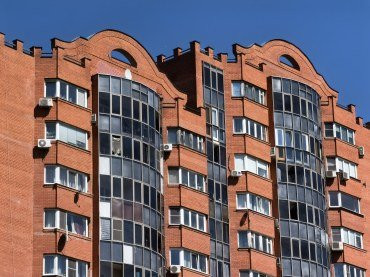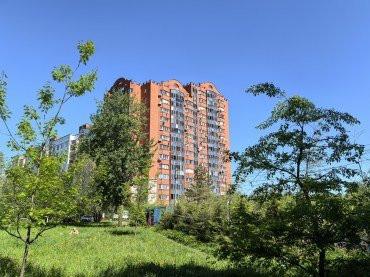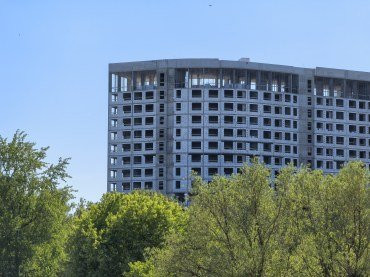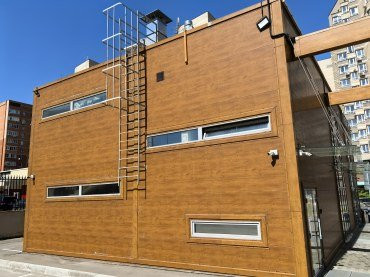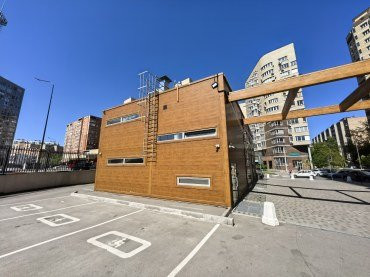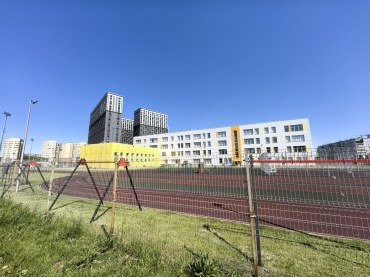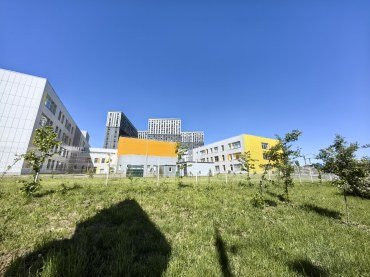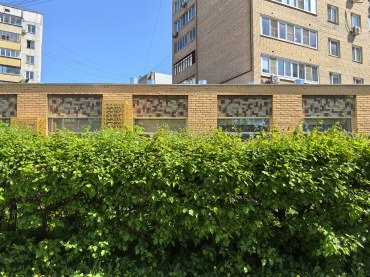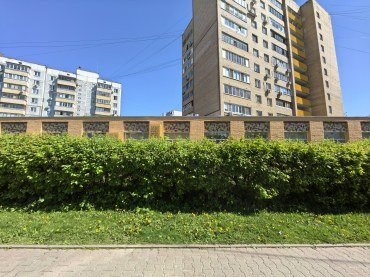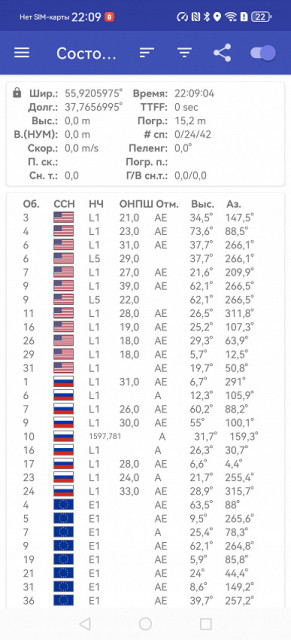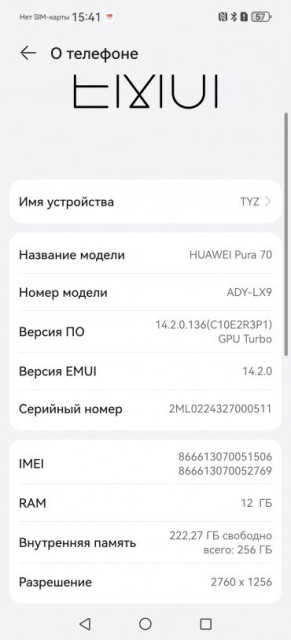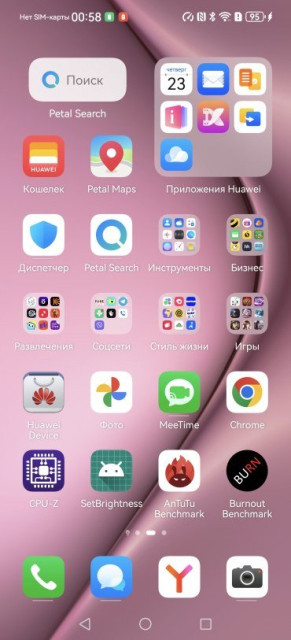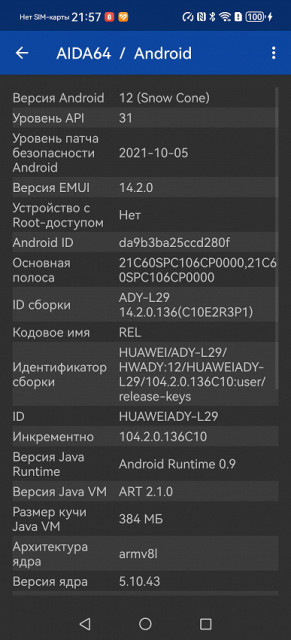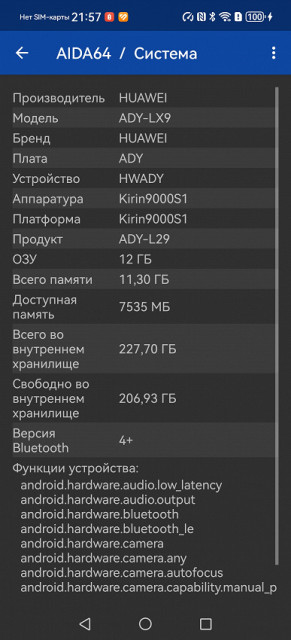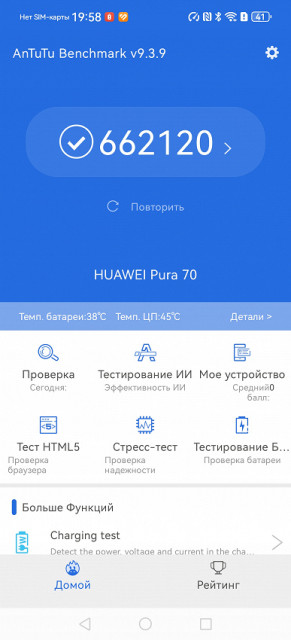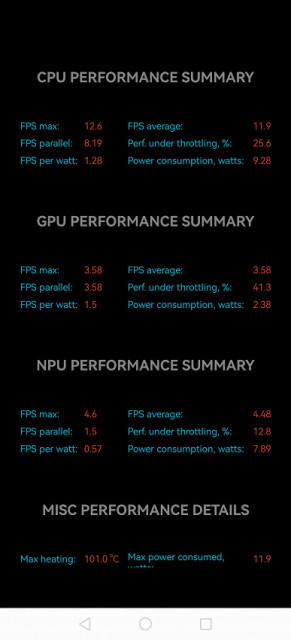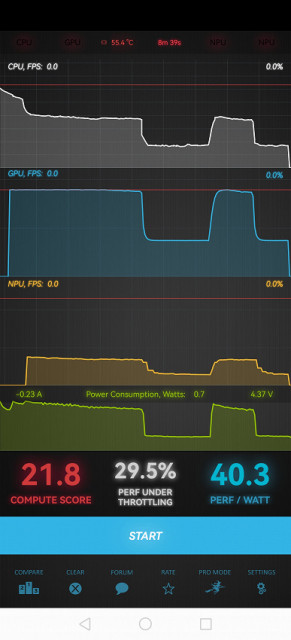The Huawei Pura 70 is the new entry-level model in a smartphone lineup that includes several different models. This series, renamed Pura, evolves from the long-awaited Huawei P series, which has been revised and modernized after 12 years of existence. The older model Huawei Pura 70 Ultra has already been presented, the middle Huawei Pura 70 Pro is still waiting for its moment, and today we will look at the most affordable of them — Huawei Pura 70. However, it is worth noting that affordability is relative: the price of this smartphone is about 70 thousand rubles. Despite this, the device corresponds to the sub-flagship level: for example, Huawei Pura 70 has three full-fledged rear cameras, and they are far from budget. Additionally, there are other interesting features available on this base model.

Main characteristics of Huawei Pura 70 (model ADY-LX9)
- SoC Kirin 9000S1, 8 processor cores (1×Taishan V121 @2490 MHz, 3×Taishan V121 @2150 MHz, 4×Cortex-A510 @1530 MHz)
- GPU Maleoon-910 MP4, 750 MHz
- Operating system EMUI 14.2
- Touch display AMOLED, 6.6″, 1256×2760, 460 ppi, 120 Hz
- RAM 12 GB, internal memory 256 GB
- No microSD support
- Nano-SIM support (2 pcs.)
- Networks 2G GSM, 3G WCDMA, 4G LTE
- GPS (L1+L5), Glonass (L1), BDS (B1I+B1c+B2a+B2b), Galileo (E1+E5a+E5b), QZSS (L1+L5), NavIC
- WiFi 6
- Bluetooth 5.2
- NFC, NFC-SIM
- USB 3.0 Type-C, DisplayPort 1.2, USB OTG
- There is no 3.5mm audio output for headphones
- Rear cameras 50 MP + 12 MP (telephoto) + 13 MP (wide), video 4K@60 fps, gyro-EIS, OIS
- Front camera 13 MP
- Proximity and lighting sensors, magnetic field, accelerometer, gyroscope
- Fingerprint scanner (under-screen, optical)
- Stereo speakers
- Protection degree IP68
- 4900 mAh battery, 66 W charging, 50 W wireless charging
- Dimensions 158×74×8 mm
- Weight 207 g
Appearance and ease of use
The Huawei Pura 70 smartphone comes in a standard cardboard box with a minimalist design. The kit includes an interface cable, a charger with a maximum output power of 66 W and a protective bumper.
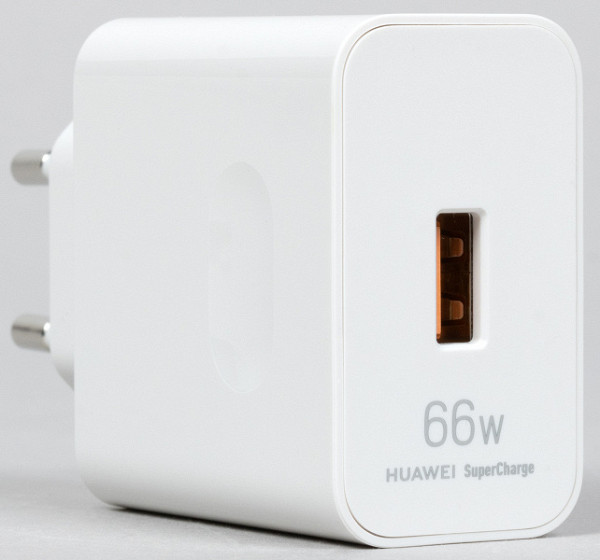
The first thing that catches your eye when you get to know the Huawei Pura 70 is its compact size. While it shouldn't be considered miniature, it is still slightly smaller than most modern smartphones, which are standardized on screens larger than 6.7 inches. Here the screen is slightly smaller, which makes the smartphone itself a little more compact. It was probably intended in the line as a response to the “basic” models of the Samsung Galaxy S24 and Apple iPhone 15.

The smartphone's design features modern, clean, straight lines that leave no room for streamlined shapes or curved edges. The smartphone screen is flat and practical, without bends at the edges, and the wide side edges ensure a secure hold of the device in your hand, preventing it from slipping. The front glass is made of second generation Kunlun Glass and is highly scratch resistant.
Despite its compact size, the smartphone feels quite weighty in the hand, as it weighs 207 grams. The frame is made of aluminum with a matte finish that does not attract fingerprints and provides a good grip in the hand. Taking into account also the matte back surface, we can say that the case is quite practical.

The smartphone comes with a protective case, which is different from the typical flexible “silicone” cases. This is a bumper with open sides made of transparent hard plastic. This choice may seem surprising, but this is what is presented in the kit.
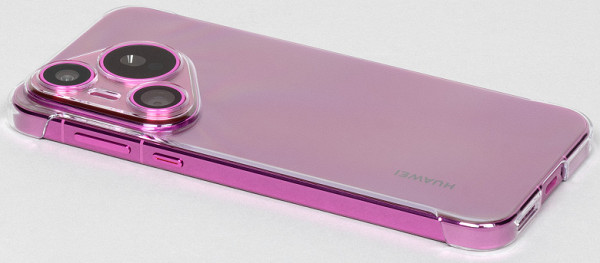
The cameras on the rear panel protrude significantly beyond the body. They are combined in a block of an unusual shape, neither round nor square. The design may seem unusual, and perhaps the unifying block could be omitted (as Apple and Samsung do), but in this case it is chosen as an expressive element that visually distinguishes the entire new Pura series.
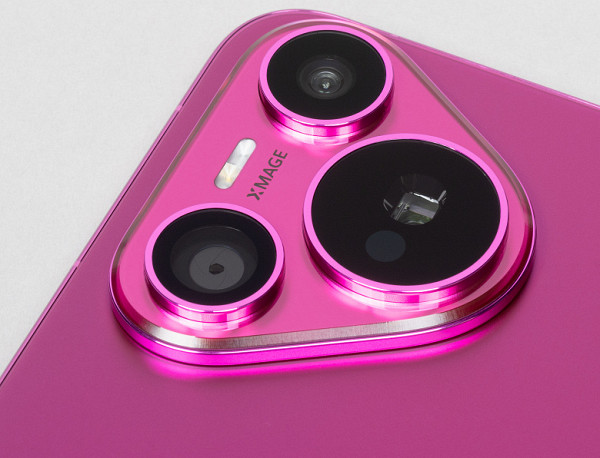
The cameras protrude so much that the smartphone lies unstable on a hard surface, swaying when working with the screen, like a paperweight.
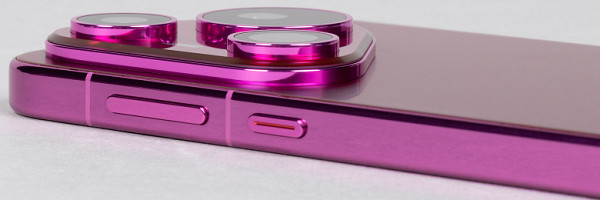
The side buttons are well made: wide, with a long elastic stroke, located directly under the finger. No complaints about them.

The front camera is installed behind a circular cutout in the screen matrix.
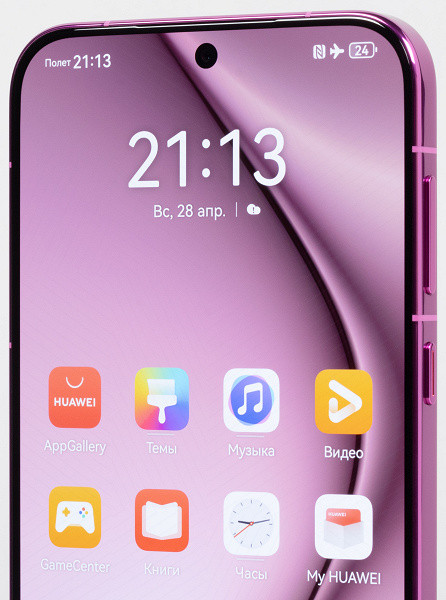
The fingerprint scanner with an optical sensor is again placed at the bottom of the screen, which is not very convenient for the finger of the hand with which you are holding the smartphone. A flat side edge and a wider power button would have been a much better fit for this item, allowing access right under your finger.

The slide-out tray can accommodate two Nano-SIM cards on one side and the other side of the slide. There is no space for a microSD memory card.
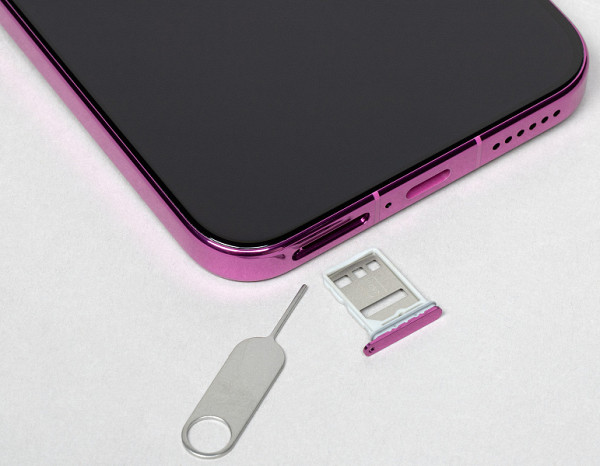
At the bottom end there is a speaker, a microphone and a USB Type-C connector. There is no 3.5 mm audio output for the minijack of wired headphones.

An additional microphone is installed on the top end

Huawei Pura 70 is protected from dust and moisture according to the IP68 standard. According to information on the manufacturer's official website, the device can be completely immersed in fresh water to a depth of 2 meters for up to half an hour. The smartphone is available in several color options, but three have officially arrived on the Russian market: pink, black and white.
Screen
The Huawei Pura 70 smartphone is equipped with a 6.6-inch diagonal AMOLED display with a resolution of 1256×2760 (20:9 aspect ratio), protected by flat Kunlun Glass 2. The matrix size is 70×153 mm, with a pixel density of 460 ppi. The width of the frame around the screen from the edge of the matrix to the edge of the body is approximately 2.5 mm on all sides, which makes it very thin. The display supports a 120 Hz refresh rate, HDR technology and multi-touch up to 10 touches.
The front surface of the screen is made of glass with a mirror-smooth surface and is scratch-resistant. Thanks to a special oleophobic coating, fingerprints are easier to remove and appear slower than on regular glass, which is significantly better than the Nexus 7.
When manually adjusting the screen brightness, the maximum value reaches 580 cd/m² in normal conditions and can increase to 1500 cd/m² in bright light (for a short time, if the smartphone does not overheat). In HDR mode, brightness reaches 1200 cd/m². The maximum brightness is very high, and the screen becomes even brighter with a smaller white field area, making it readable even in bright sunlight. The minimum brightness is 1.3 cd/m², which is convenient for using the device in complete darkness.
The screen supports automatic brightness adjustment based on data from a light sensor located under the screen at the top. With default settings, auto-brightness reduces brightness to 4 cd/m² in complete darkness, sets it to 130 cd/m² in a lit office and increases to 1000 cd/m² in bright light. We adjusted the auto brightness to achieve 13 cd/m² in the dark, 130 cd/m² in the office and 1000 cd/m² in the sun, which turned out to be optimal. The auto-brightness function works adequately and allows the user to adjust it to their needs.
At high and medium brightness levels, significant modulation is observed with a frequency of 360 Hz.

At high and medium brightness, the modulation frequency is 360 Hz, but due to the low duty cycle and the difference in the modulation phase across the screen area, there is no visible flicker. When the brightness is significantly reduced, the modulation frequency increases to 1.44 kHz, which also prevents visible flicker.
In the screen settings you can enable a mode with an increased refresh rate of up to 120 Hz:
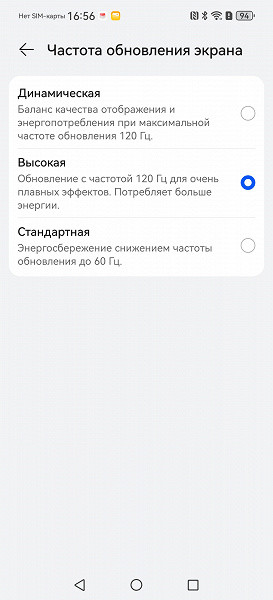
In this case, the nature of the modulation remains unchanged. It's worth noting that on static images, the refresh rate can drop to 10Hz, regardless of the selected setting.
There is also a Flicker Reduction feature available, which can be enabled in the screen settings.

In English-language literature and in the news, the name DC Dimming is usually used (in graphs we will shorten it to DCD). When this function is enabled, only the modulation pattern at low brightness changes. There was still no visible flickering:
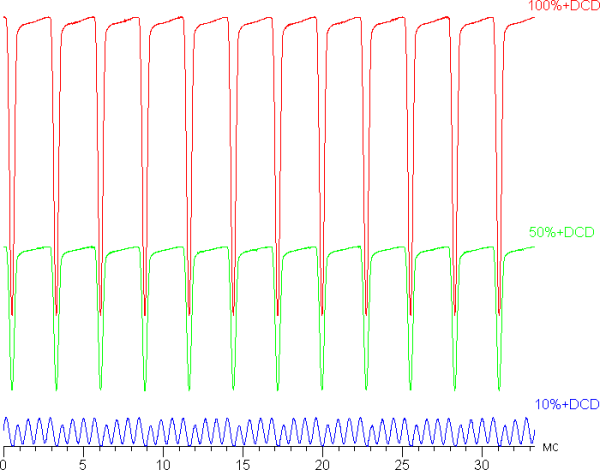
This screen uses an AMOLED matrix, which is an active matrix organic light-emitting diode. A full-color image is created using subpixels of three colors — red ®, green (G) and blue (B), but there are half as many red and blue subpixels, which can be referred to as RGBG. This is confirmed by the following fragment of a microphotograph:

In the fragment above you can count 4 green subpixels, 2 red (4 halves) and 2 blue (1 whole and 4 quarters). By repeating these fragments, you can lay out the entire screen without tears or overlap. For such matrices, Samsung introduced the name PenTile RGBG. The manufacturer calculates the screen resolution by the green subpixels; by the other two it will be lower. Of course, there is some unevenness of contrast borders and other artifacts. However, due to the high resolution, they only minimally affect the image quality.
The screen has excellent viewing angles. The brightness at an angle for both screens decreases noticeably, but in the case of a smartphone the drop in brightness is much less pronounced. As a result, with formally the same brightness, the screen of this smartphone visually looks much brighter (compared to LCD screens), since you often have to look at the screen of a mobile device from at least a slight angle. True, white color, when deviated at very large angles, acquires a barely noticeable blue-green tint. Black remains just black from any angle. It is so black that the contrast setting is not applicable in this case. For comparison, here are photographs in which identical images are displayed on the screens of the smartphone and the second comparison participant, while the brightness of the screens is initially set to approximately 200 cd/m², and the color balance on the camera is forcibly switched to 6500 K.
White field (profile «Normal colors»):
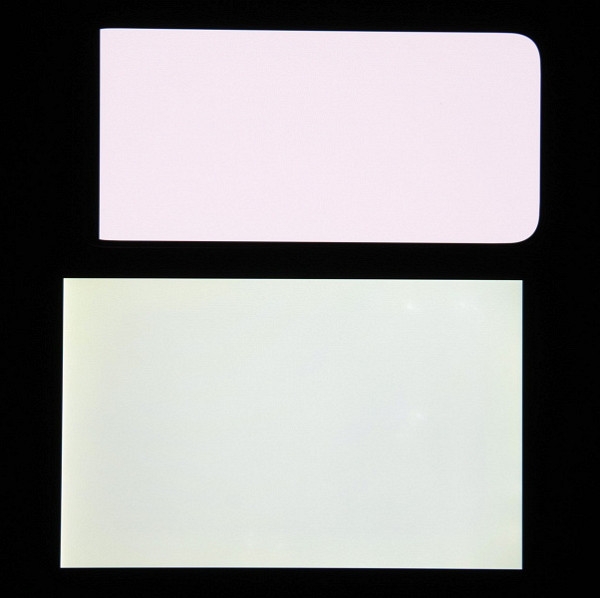
Note the good uniformity of brightness and color tone of the white field.
And a test picture (profile Regular colors):
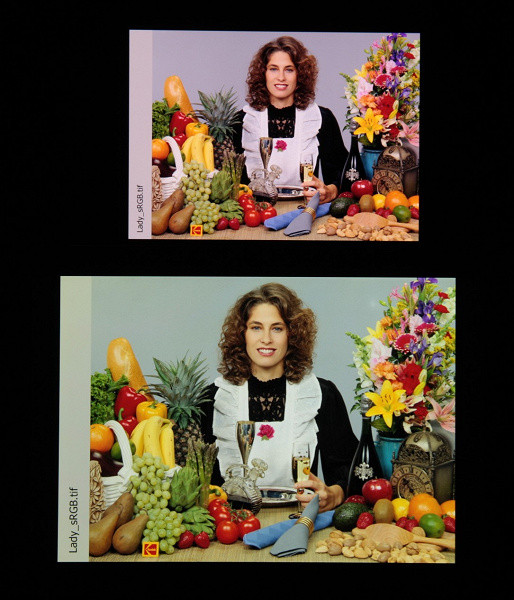
Color reproduction is good, the colors are moderately saturated, but the color balance of the screens varies slightly. Let us remind you that the photograph cannot serve as a reliable source of information about the quality of color rendering and is provided only for conditional visual illustration. In particular, the pronounced reddish tint of the white and gray fields present in photographs of the smartphone screen is visually absent when viewed from a perpendicular view, which is confirmed by hardware tests using a spectrophotometer. The reason is that the spectral sensitivity of the camera sensor does not exactly match this characteristic of human vision.
The photo above was taken with the “Normal Colors” profile active in the screen settings, there are two of them:
The Vivid colors profile is visually slightly different in color balance:
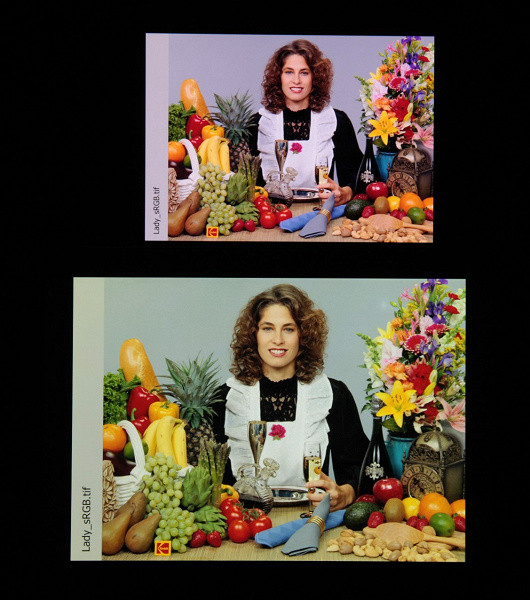
Switching the state of the matrix elements is almost instantaneous, but when turned on, there may be a step width of approximately 17 ms (corresponding to a screen refresh rate of about 60 Hz) or approximately 8 ms (120 Hz). For example, the dependence of brightness on time during the transition from black to white looks like this:
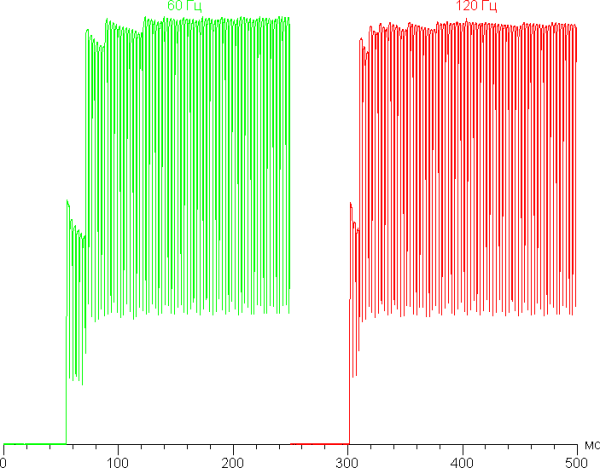
In some scenes, the presence of such a step can cause the appearance of plumes that trail behind moving objects.
A gamma curve constructed using 32 points with equal intervals based on the numerical value of the gray shade showed the absence of a significant rollover in either highlights or shadows. The index of the approximating power function was 2.24, which is close to the standard value of 2.2. The actual gamma curve deviates only slightly from the power law.
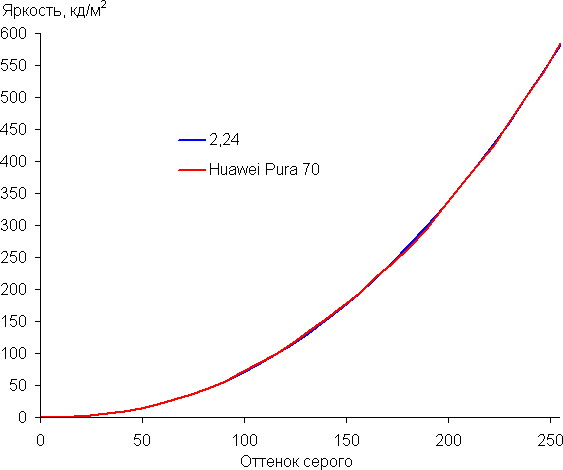
Let us recall that in OLED screens the brightness of image fragments dynamically changes depending on the nature of the displayed image: it decreases slightly for generally light images. As a result, the resulting brightness versus hue relationship (gamma curve) probably does not correspond to the gamma curve of a static image, since the measurements were carried out with sequential output of shades of gray almost over the entire screen.
The color gamut in Vivid colors and Normal colors modes, for example, when using Google Chrome, is close to sRGB.
The color components are mixed together to a large extent, which narrows the gamut to sRGB:

Regular colors
However, if the Display P3 profile is specified in the images, then when outputting in the standard Gallery application, we received a color gamut wider than sRGB and very close to DCI-P3 (in the case of the Vivid colors profile, the gamut is slightly wider):
Let's look at the spectra in the case of test images with the Display P3 profile:
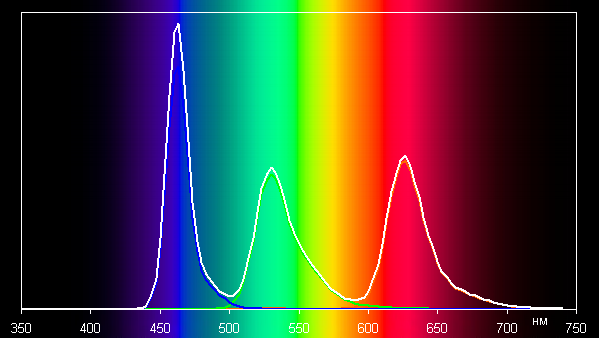
Bright colors
It can be seen that in this case there is no mixing of components, which indicates that the screen color space is close to Display P3.
The device provides the ability to adjust the color balance by selecting a color temperature profile or adjusting the hue on the color wheel. In Normal Colors mode, even without correction, the balance of shades on the gray scale is good, since the color temperature is close to the standard 6500 K, and the deviation from the blackbody spectrum (ΔE) is below 10, which is considered good for a consumer device. At the same time, color temperature and ΔE change little hue to hue, which has a beneficial effect on the visual perception of color balance.
As expected, the screen has a high maximum brightness (up to 1500 cd/m²) and excellent anti-glare properties, which allows you to use the device even in bright sunlight without any problems. In conditions of complete darkness, the brightness can be reduced to a comfortable value (up to 1.3 cd/m²). The automatic brightness adjustment mode works adequately. Screen benefits include an effective oleophobic coating, no visible flicker, high resolution, high refresh rate mode (120Hz) and a near-sRGB color gamut with good color balance (with the right profile). In addition, it is possible to output to the P3 color space with support from standard software. The general benefits of OLED screens are also present, including true blacks and less drop in image brightness when viewed at an angle. In general, the screen quality is at a high level.
Camera
The Huawei Pura 70 smartphone is equipped with three full-fledged rear cameras: main, long-focus and wide-angle. The first two cameras are equipped with autofocus and optical stabilizers.
- 50 MP, 1/1.3″, f/1.4—f/4.0, 25 mm, PDAF, Laser AF, OIS (main)
- 12 MP, f/3.4, 125 mm, PDAF, OIS, 5× optical zoom (telephoto)
- 13 MP, f/2.2, 13 mm (wide-angle)
The main camera is equipped with a variable aperture lens, fast autofocus and optical image stabilization. By default, it uses pixel binning, producing 12.5MP images, but there is also the option to switch to a full 50MP resolution. Photo processing in 50-megapixel mode is of high quality: daytime images are noise-free and retain even the smallest details without artifacts. This is achieved thanks to a high quality sensor. Thus, photos taken in 50 MP mode offer high detail without any drawbacks, and the only reason not to shoot at this resolution is to save disk space.
Photos with a resolution of 12.5 megapixels are distinguished by the correct geometry of objects, a clear field of the frame without blur, high detail and excellent brightness, clarity, contrast and volume. Wide dynamic range ensures excellent exposure in a variety of lighting conditions without overexposure or loss of detail in the brightest and darkest areas. Moreover, all this is achieved with virtually no noise or artifacts, with the exception of slight sharpening, which, unfortunately, is noticeable. In general, the quality of shooting is at the highest level.
In night mode the situation is worse, detail drops noticeably, but there is no noise. Also, the colors are oversaturated, so the picture is unnatural, although quite spectacular. And, perhaps, it is a bit light for a night shot.

The long-focus periscope lens provides 5x optical zoom and does it very effectively, especially thanks to the presence of autofocus and optical stabilization. While the image itself is not flawless and lacks some clarity, there is also noticeable sharpening. However, using an «honest» long lens allows you to see a lot of distant detail that is not available with a main (wide-angle) lens. Thus, using a zoom brings significant benefits.
The wide-angle module, although it produces significantly less detail and distorts the proportions of objects, leaving blur at the edges of the frame, is still of quite high quality. By removing sharpening from images, which does not improve the quality of blurred details, this camera could be used regularly. Despite the current processing option, which is mainly suitable for miniatures, its advantages include good brightness of the images and complete color matching with the main camera.
For macro photography, a wide-angle module is used, which is quite logical: it has the shortest focusing distance and the greatest depth of field. The resulting photos look much more interesting than the so-called “macro photos” from the notorious 2-megapixel “macro cameras” in budget smartphones.
In this case, there is also the ability to zoom in macro mode, but for this, of course, a regular digital zoom is used, and the result looks downright bad. The same effect can be achieved by simply “pinching” your fingers on the picture on the screen.
In the field of video shooting, this smartphone is not as strong as in photography. The video appears flatter, overexposed, and has less contrast, with a slight flicker appearing at times. This is still quite a high level, but there are smartphones that do it better. However, the camera is capable of recording video in a maximum resolution of 4K at 60 frames per second with optical and electronic stabilization based on the built-in gyroscope (gyro-EIS). The sound is recorded very high quality.
The front camera is equipped with a 13 megapixel sensor and an f/2.4 lens. Although there is only one camera, it offers three different “focal lengths” by cropping the central part of the image. The photos are highly detailed and well exposed, but slightly lacking in contrast and volume. This is very good, although not the highest quality.
Telephone and communications
The Huawei Pura 70 smartphone supports mobile networks up to 4G and demonstrates reliable performance in wireless networks in urban environments in the Moscow region. The connection remains stable and is quickly restored after a break. The device also has a wireless adapter that supports tri-band Wi-Fi 6, Bluetooth 5.2 and NFC. However, e-SIM is not supported.
The two-channel satellite navigation module works with GPS, Glonass, BDS, Galileo, QZSS and NavIC. Satellites are quickly detected during a cold start, and the positioning accuracy is not satisfactory.
The voice of the interlocutor in the speaker is clear, the volume is sufficient. The vibration motor is not strong. Built-in sensors including a gyroscope are also available.
Software and multimedia
The Huawei Pura 70 smartphone runs on its own EMUI 14.2 interface (in the global version), which is already familiar to many Huawei users from the times when the company freely collaborated with Google.
EMUI is a stable and well-developed shell that has been developed over the years. It provides comfortable use without annoying advertising. However, the version for the Russian market may have an excessive number of pre-installed applications. It is important to note that the smartphone does not have access to the application store and Google services. Instead, it uses Huawei's built-in services, such as the AppGallery app store and the Petal suite of utilities for search, mapping and other services.
The smartphone has stereo speakers that produce high-quality, clear, bright, rich sound. There is no audio output for the minijack of wired headphones, but the sound in wireless headphones is also quite decent, as far as possible.
Performance
The Huawei Pura 70 smartphone is equipped with a Kirin 9000S1 processor, which includes 8 cores: one Taishan V121 core clocked at 2490 MHz, three Taishan V121 cores clocked at 2150 MHz and four Cortex-A510 cores clocked at 1530 MHz. Graphics tasks are handled by the Maleoon 910 GPU. The device is equipped with 12 GB of RAM and 256 GB of internal storage. There is no option to use a microSD card, but the smartphone supports connecting external devices via the USB Type-C port in USB OTG mode.
Information about the process technology and chip manufacturer is not available from official sources, but according to Bloomberg reports, citing TechInsights, the Kirin 9010 model used in the older models of the Pura 70 series is manufactured on the same 7 nm process technology as the previous Kirin 9000S model. While the Kirin 9000S1 used in the base Pura 70 model is a slightly scaled-down version of the same chip, resulting in slightly lower performance compared to the flagship SoCs.
Despite this, the performance of the Huawei Pura 70 is sufficient for smooth operation of the interface and launching games of any complexity without delays.
Testing in complex tests AnTuTu and GeekBench:
For ease of analysis, the results of our smartphone tests were summarized in tables. These tables also include results from other devices from different market segments that were tested on similar versions of the benchmarks. However, due to the limitations of benchmarking, we cannot present results from different versions of benchmarks, so some decent and relevant models are left out of this comparison.
| Huawei Pura 70 (Kirin 9000S1) | Honor Magic6 Pro (Qualcomm Snapdragon 8 Gen3) | Realme 12 Pro+ (Qualcomm Snapdragon 7s Gen2) | Google Pixel 8 Pro (Google Tensor G3) | Samsung Galaxy S24 Ultra (Qualcomm Snapdragon 8 Gen3) | |
|---|---|---|---|---|---|
| AnTuTu (v9.x) (bigger is better) | 662120 | 1205856 / 1544217 | 576685 | 808457 | 1806649 |
| GeekBench 6 (bigger is better) | 1258/3638 | 2139/6582 | 894/2801 | 1741/4349 | 2267/7091 |
Testing the graphics subsystem in GFXBenchmark gaming tests:
| Huawei Pura 70 (Kirin 9000S1) | Honor Magic6 Pro (Qualcomm Snapdragon 8 Gen3) | Realme 12 Pro+ (Qualcomm Snapdragon 7s Gen2) | Google Pixel 8 Pro (Google Tensor G3) | Samsung Galaxy S24 Ultra (Qualcomm Snapdragon 8 Gen3) | |
|---|---|---|---|---|---|
| GFXBenchmark Aztec Ruins OpenGL (1080p Offscreen, fps) | 60 | 195 | 35 | 107 | 188 |
| GFXBenchmark Aztec Ruins Vulkan (1080p Offscreen, fps) | 58 | 225 | 39 | 108 | 193 |
| GFXBenchmark Car Chase ES 3.1 (1080p Offscreen, fps) | 42 | 161 | thirty | 78 | 120 |
| GFXBenchmark Manhattan ES 3.1 (1080p Offscreen, fps) | 98 | 189 | 54 | 142 | 204 |
| GFXBenchmark T-Rex (1080p Offscreen, fps) | 248 | 267 | 122 | 328 | 324 |
Testing in browser cross-platform tests:
| Huawei Pura 70 (Kirin 9000S1) | Honor Magic6 Pro (Qualcomm Snapdragon 8 Gen3) | Realme 12 Pro+ (Qualcomm Snapdragon 7s Gen2) | Google Pixel 8 Pro (Google Tensor G3) | Samsung Galaxy S24 Ultra (Qualcomm Snapdragon 8 Gen3) | |
|---|---|---|---|---|---|
| Google Octane 2 (bigger is better) | 5050 | 21955 | 30529 | 52617 | 70812 |
| JetStream (bigger is better) | — | 105 | 85 | 102 | 180 |
Memory speed test results:
Heat
We test for performance degradation when heated using the Burnout Benchmark program, which allows you to load the CPU, GPU and NPU:
| Stress on | Heating performance as a percentage of maximum |
|---|---|
| CPU | 26% |
| GPU | 41% |
| NPU | 13% |
Battery life
The Huawei Pura 70 smartphone is equipped with a 4900 mAh battery. Thanks to good system optimization, not the most powerful SoC and a slightly smaller screen compared to flagship devices, it was possible to achieve very high autonomy. During testing, the device even lasted a little longer than its older flagship counterpart with a larger screen. The general series of updated Huawei smartphones showed excellent results in terms of autonomy.
Testing was carried out at normal power consumption levels without using the power saving features, although they are also available on the device. During the tests, the following conditions were established: a minimum comfortable brightness level (approximately 100 cd/m²). Tests included continuous reading in the Moon+ Reader program (with a standard, light theme), continuous viewing of HD video (720p) over a home Wi-Fi network, and the game Injustice 2 with automatic graphics settings.
| Battery capacity | Reading mode | Video mode | 3D Game Mode | |
|---|---|---|---|---|
| Huawei Pura 70 | 4900 mAh | 34 h. 00 m. | 26:00 | 9:00 a.m. |
| Honor Magic6 Pro | 5600 mAh | 38 h. 00 m. | 30 h. 00 m. | 9:00 a.m. |
| Google Pixel 8 Pro | 5050 mAh | 22:00 | 18:00 | 7:00 am |
| Honor 90 | 5000 mAh | 21:00 | 18:00 | 7:00 am |
| Honor Magic V2 | 5000 mAh | 21:00 | 17:00 | 6:00 am |
| Oppo Find N3 | 4805 mAh | 20:00 | 18:00 | 6:00 am |
| Huawei Mate X3 | 4800 mAh | 14:00 | 10:00 am | 5:00 a.m. |
| Samsung Galaxy S24 Ultra | 5000 mAh | 32:00 | 26:00 | 9:00 a.m. |
All these data represent the maximum possible values obtained under «ideal» conditions, including no SIM cards installed. Any changes to the use case will likely result in reduced results.
Charging a smartphone using the included charger takes 1 hour and 20 minutes. Wireless charging (50W) is also supported.
Bottom line
Let us remind you that the Pura 70 line includes two more models: Pura 70 Ultra and Pura 70 Pro. The junior model is based on the Kirin 9000S1 SoC, while the other two are based on the Kirin 9010. There are differences in memory capacity, charging power (although even the Pura 70 has an impressive 66 W), and screen sizes (although OLED matrices are used throughout ). The older modification costs almost twice as much. It is in the upper price segment and competes with high-end devices such as the iPhone 15 Pro Max. On the other hand, the base model Huawei Pura 70, with its convenient dimensions, competes for the attention of buyers at the level of the basic iPhone. At this price, this model offers interesting features for the mid-market segment. One can only be happy for the manufacturer: even under the conditions of sanctions, Huawei did not give up and continues to successfully develop and increase its capabilities.

